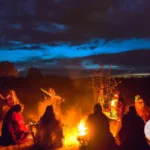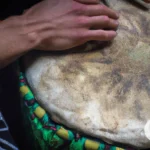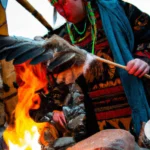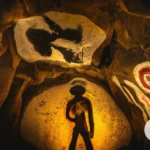It’s no secret that music has a powerful impact on the human experience, but few forms of music evoke the same mystique as shamanic music. Across cultures and continents, shamanic music has played a significant role in everything from religious rituals to healing ceremonies. But what exactly is shamanic music? How does it work in the brain? And what is its cultural significance in different parts of the world? In this article, we’ll explore the intriguing world of shamanic music – from its roots in traditional cultures to its modern-day applications – and delve into the science behind its transformative power. So, get ready to immerse yourself into the captivating world of shamanic music.
The Cultural Significance of Shamanic Music
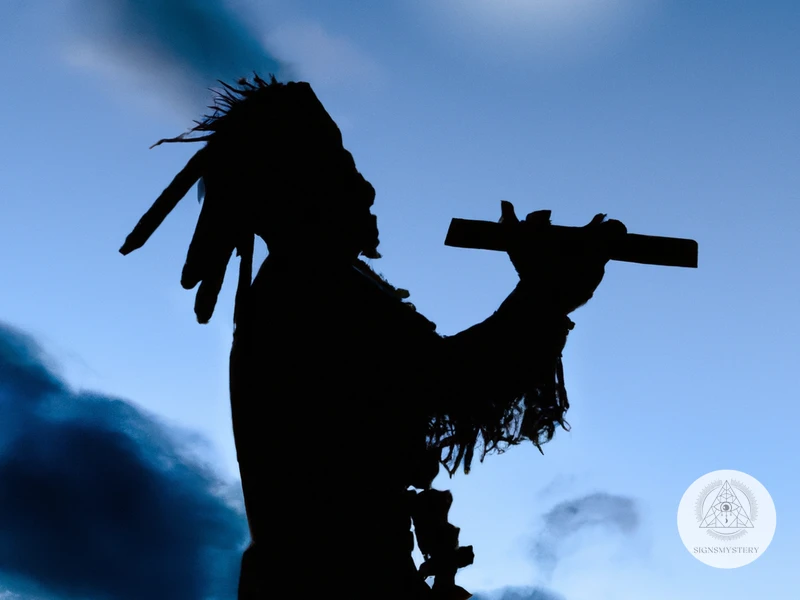
Shamanic music has been an integral part of traditional cultures worldwide, serving a deep cultural and spiritual significance. The rhythmic beats and repetitive musical patterns heal and transport individuals to altered states of consciousness. Shamanic music has been used for centuries by indigenous people to access spiritual realms, connect with ancestors, and seek guidance from the divine. Though the genre of shamanic music varies from country to country, certain instruments like a shamanic drum or rattle are prevalent. The chanting, singing, and instrumental melodies combined with the spiritual atmosphere of shamanic ceremonies enable individuals to face their fears, desires, and emotions. By diving into the world of shamanic music, one can open their mind to embrace ancient traditions and elevate spiritually.
What is Shamanic Music?
Shamanic music is a type of music used in shamanic rituals and ceremonies. It is often characterized by its repetitive rhythms and sounds, which are thought to induce trance-like states in listeners. Shamanic music is a tool used by shamans to connect with the spirit world, and it is believed to have the power to heal, protect, and transform individuals and communities.
Shamanic music can take many forms, including drumming, chanting, singing, and the use of various musical instruments. The specific type of shamanic music used in a ceremony or ritual will depend on the culture and tradition of the shaman and the community they are serving. However, certain elements, such as the use of repetitive rhythms and sounds, are common to shamanic music across cultures.
The role of shamanic music in different cultures is to create a sacred space and connect individuals with the spiritual realm. Traditional shamanic chants and songs are often passed down through generations, and their words and melodies hold deep cultural and spiritual significance. The use of shamanic music is not limited to indigenous cultures, as it has also gained popularity in modern Western culture as a tool for healing and self-discovery.
Overall, shamanic music plays a vital role in shamanic practices, serving as a powerful tool that can transport individuals to different states of consciousness to aid in spiritual growth, healing, and transformation. Different types of shamanic music and instruments reflect the diverse cultures and traditions in which they are used, and each carries specific meanings and significance. To learn more about the different aspects of shamanic music and how it is used in various cultures, continue reading the rest of this article or check out one of our related articles: “The Role of Traditional Chants in Shamanic Ceremonies”, “Exploring Shamanic Songs”, “Healing with Shamanic Drumming and Chanting”, “How to Learn and Perform Traditional Shamanic Chants”, or “Shamanic Music Instruments and Their Significance.”
How Shamanic Music is Used in Different Cultures
Shamanic music has a unique spiritual and cultural significance in many cultures around the world. Across different cultures, shamanic music is used in various ways depending on the cultural context and the spiritual beliefs of the community.
In some cultures, shamanic music is used to induce a trance state or to call upon the spirits. For example, in traditional Native American culture, shamanic music is used in sweat lodge ceremonies to create a deep spiritual experience for the participants. The shaman drums and sings, setting the tone for the ceremony and guiding the participants through the different stages of the ritual.
In other cultures, shamanic music is used in healing practices. In Africa, for example, shamanic music is used to facilitate communication with ancestors and to heal the sick. The shaman or healer uses various instruments, such as drums and rattles, to create a healing soundscape that invokes ancestral spirits and helps to restore balance in the individual’s body and mind.
In South America, shamanic music is used in ayahuasca ceremonies. Ayahuasca is a powerful plant medicine that is used to induce a transformative experience. The shaman uses shamanic music, including icaros, which are sacred songs that are believed to have healing and protective properties, to guide the participants through the experience.
Shamanic music is also used in Asia, particularly in Mongolia, where it is an essential part of shamanic rituals. The shaman uses a horsehead fiddle, called a morin khuur, to create a hypnotic melody that induces a trance-like state in the participants. The shaman then travels to the spirit world to invoke the power of the spirits and to seek guidance for the community.
In Europe, shamanic music is used in various pagan traditions, such as the Nordic tradition. The shaman or seer uses drums and other percussion instruments to enter into a trance state and to communicate with the spirits. The music is used to set the tone for the ritual and to create a spiritual space for the participants.
Shamanic music plays an important role in many cultures around the world. Its uses vary depending on the cultural context, but it is often used to create a spiritual experience and to connect with the spirits. Shamanic music is a powerful tool for spiritual growth and transformation that has been used for centuries in cultures all around the world.
The Transformative Power of Shamanic Music
Shamanic music has a powerful transformative effect on both the mind and the body. It’s no wonder that shamans have used music as a tool for healing and spiritual growth for centuries. The rhythmic beat of shamanic music has been known to induce altered states of consciousness, allowing participants to delve into the deeper parts of their psyche.
This transformative power of shamanic music can be seen in how it is used to heal ailments such as depression, anxiety, addiction, and chronic pain. The drumbeat and chants used in shamanic music can help release endorphins, which are natural painkillers that promote a sense of well-being. The repetitive nature of shamanic music can help quiet the mind and induce a sense of relaxation.
Shamanic music is also used to help individuals connect with their spiritual selves. The hypnotic beats create a sense of unity between the individual and the collective unconscious, allowing them to gain insight into their own psyche. Through this connection, individuals can gain a deeper understanding of their spiritual path and can begin to explore the mysteries of the universe.
The transformative power of shamanic music is not limited to the individual. It can also help bring communities together, promoting a sense of unity and harmony. The collective energy created by shamanic music can help break down barriers between individuals and foster a sense of connection and belonging.
Shamanic music has a transformative power that is both profound and far-reaching. It can heal the mind, body, and spirit, and bring individuals and communities closer together. Whether used for healing or spiritual growth, shamanic music has the ability to unlock the mysteries of the universe and help individuals tap into their true potential.
Examples of Shamanic Music from Around the World
Examples of shamanic music can be found in various cultures around the world. One widely known example is the Native American powwow drumming and singing. This type of shamanic music is characterized by the use of a large communal drum and singers chanting powerful and rhythmic songs.
In Asia, shamanic music takes on a different flavor. The shamanic music of Mongolia, for instance, features guttural throat singing known as “khoomii”. This type of music is believed to have special power in helping heal people and bring about harmony in the community.
In Africa, the shamanic music is characterized by the use of various percussion instruments, such as djembes, talking drums, and kalimbas. These instruments are often played in syncopated rhythms that are believed to connect the human and spirit worlds.
South America has a rich tradition of shamanic music as well. One example is the “icaro” songs of the Amazon shamans, which are sung to communicate with the spirits of the plants and animals. These songs are often accompanied by the sounds of a “chacapa”, a percussion instrument made of dried leaves.
In Europe, shamanic music can be found in the form of traditional folk music. For example, the bagpipe music of Scotland and Ireland is often associated with the power of the ancestors and has been used by Celtic shamans to connect with the spirit world.
In the Oceanic region, shamanic music takes on various forms, such as the use of “didgeridoos” by the Aboriginal people of Australia, and the “nose flutes” used by the indigenous people of Polynesia.
Shamanic music from around the world shares common themes of connecting with the spirit world, healing, and harmony. Despite their differences, these traditions all share a belief in music’s transformative power.
Shamanic Music in Different Parts of the World
Shamanic music has been an integral part of various cultures across the world. In Africa, the use of drums, rattles, and other percussion instruments create a trance-like state that allows for communication with the spirit world. In Asia, gongs, bells, and chanting are commonly used in shamanic rituals. North American shamans use the sound of animal calls and the repetition of certain words to enter into a state of altered consciousness. South American shamans use instruments such as the rainstick and the pan flute to connect with the natural environment. In Europe, the use of folk instruments such as the violin and accordion are prevalent in shamanic traditions. Despite the distinct differences in the types of instruments and techniques used, the underlying purpose of shamanic music remains the same – to guide the shaman through a transformative experience and connect with the spiritual realm.
Africa
Africa has a rich history of shamanic music, where it is used for both spiritual and healing purposes. Here are some examples of shamanic music traditions in different parts of Africa:
| Country | Shamanic Music Tradition |
|---|---|
| South Africa | The trance dance music of the San people, known as “xukuri,” is used during ceremonies to enter a trance state and communicate with the spirit world. |
| Mali | The “Bamana” people of Mali use a type of shamanic music called “jelimuso,” which features a solo vocalist accompanied by a percussion ensemble. This music is used during healing ceremonies to call upon ancestors and spirits for guidance. |
| Ghana | The “Dagara” people of Ghana use shamanic music called “gyil” during rituals and ceremonies to connect with the spirit realm. The music is played on a wooden xylophone-like instrument and is believed to have the power to heal and protect. |
Shamanic music in Africa is deeply ingrained in spiritual and cultural practices, and continues to be an important part of many communities.
Asia
Asia is a vast continent with diverse cultural traditions, and shamanic music is an integral part of many of these traditions. In some Asian cultures, shamanic music is used in healing rituals, while in others it is used in spiritual ceremonies.
Tibetan Shamanic Music: Tibetan shamanic music has a distinct sound characterized by the use of the dhamaru (a small two-headed drum) and the Tibetan horn. It is believed that this music can evoke supernatural forces and invoke deities, making it an important part of Tibetan Buddhist rituals.
Japanese Shamanic Music: Japanese shamanic music, known as Kamigata, involves the use of flutes, drums, and vocals. It is believed that this music can summon spirits and ancestors. Kamigata is an ancient tradition that dates back to pre-Buddhist times, and it is still practiced in some rural areas of Japan today.
Korean Shamanic Music: Korean shamanic music, known as Sinawi, is characterized by its use of gongs, flutes, and drums. It is believed that this music can connect the shaman to the spirit world and help them communicate with ancestors and deities. Sinawi is often accompanied by dance and is an important part of Korean shamanism.
Indonesian Shamanic Music: Indonesian shamanic music is diverse and varies greatly between different regions and cultures. However, the use of the gamelan (a traditional percussion ensemble) is common across many Indonesian shamanic traditions. In some cultures, such as the Tengger in East Java, shamanic music is used in trance rituals that involve possession by ancestral spirits.
Chinese Shamanic Music: Chinese shamanic music has a long history and is believed to have originated in ancient shamanic traditions. It is characterized by the use of instruments such as the guqin (a seven-stringed zither) and the qing (a type of bamboo flute). In traditional Chinese medicine, shamanic music is used to promote healing and balance the body’s energy.
Shamanic music has played an important role in Asian cultures for thousands of years, and it continues to be an important part of many spiritual traditions today.
North America
North America is home to many indigenous shamans who have developed unique musical traditions that are deeply ingrained in their cultures. Native American shamanic music, for example, is characterized by the use of drums, which are often considered to be the heartbeat of Mother Earth. The rhythms and beats of these drums are said to bring people into a trance-like state, making them more receptive to spiritual guidance.
In addition to drums, other instruments such as flutes, rattles, and gongs are also used in Native American shamanic music. These instruments are often hand-crafted using natural materials such as wood, bone, and skin, and are considered to be sacred objects that have their own spirits.
The songs and chants used in Native American shamanic music are often passed down from generation to generation, and are used for a variety of purposes such as healing, vision quests, and connecting with the spirit world. Each song has its own meaning and purpose, and is often sung in a specific way for maximum effect.
Outside of Native American shamanic traditions, North America is also home to modern shamans who use music as a tool for healing and spiritual growth. These individuals often blend elements of different musical traditions to create unique soundscapes that are designed to facilitate deep relaxation and connection with the self.
The use of shamanic music in North America is a testament to the deep spiritual roots of indigenous cultures in the region. Whether it is through the use of traditional Native American instruments and songs, or through modern interpretations, the transformative power of shamanic music continues to be felt by many people across the continent.
South America
has a rich and diverse history of shamanic music, with each region and indigenous group having its own unique traditions. Below are some examples:
| Region/Group | Instrumentation | Description |
|---|---|---|
| Andean Shamans | Quena (flute), Charango (small guitar), Zampona (panpipes), Bombo (drum) | The music is often played during healing ceremonies, and the shamans use the music to connect with the spirit world. The rhythms and melodies are often repetitive, inducing trance-like states. |
| Amazonian Shamans | Chanting, percussion (drums, shakers) | The shamans sing and chant songs that communicate with the spirits of the forest and animals. The music is often accompanied by the sounds of animals and nature, creating an immersive and mystical experience. |
| Shipibo Shamans | Icaros (chants) | The shamans use the icaros to communicate with the spirits and to heal people. The icaros are often accompanied by the sounds of the chakapa (rattles made from leaves), and the music is believed to have curative powers. |
In addition to these examples, other indigenous groups in South America have their own unique shamanic music traditions, such as the Mapuche people in Chile who use the kultrun (a type of drum) and the Machiguenga people in Peru who use the kene (flute) and the hashtay (a type of shaker).
Shamanic music in South American cultures plays an important role in spiritual and healing practices, connecting people with the natural world and the spirits that reside within it. The use of specific instruments and rhythms, as well as the incorporation of chanting and nature sounds, help induce altered states of consciousness and facilitate communication between the shaman and the spirit world.
Europe
Europe also has a rich history of Shamanic music traditions. Among the most notable is the Celtic tradition, which has been practiced for centuries throughout Ireland, Scotland, and Wales. Celtic shamanic music typically involves the use of drums, flutes and the harp, and is often accompanied by chanting and singing.
The Sami people of Scandinavia also have a deep shamanic music tradition that has been passed down from generation to generation. Sami shamanic music focuses on connecting with the natural world and encompasses the use of an array of instruments, including drums, shamanic rattles, and the joik, a traditional form of chanting.
In Eastern Europe, the Balkan region has a long history of shamanic music. The Romani people, who migrated from India, brought with them their own shamanic music traditions which they incorporated into the Balkan culture. Balkan shamanic music often involves the use of the accordion, clarinet, and the djembe, and is characterized by complex rhythms and lively dancing.
The Siberian shamanic music tradition also has a strong presence in parts of Europe, particularly in Russia. Siberian shamanic music typically involves the use of drums, throat singing, and other overtone chanting.
Shamanic music in Europe reflects the deep connection between human societies and their natural surroundings, as well as their desire to use music to transcend the ordinary and tap into the spiritual realm.
Shamanic Music Traditions
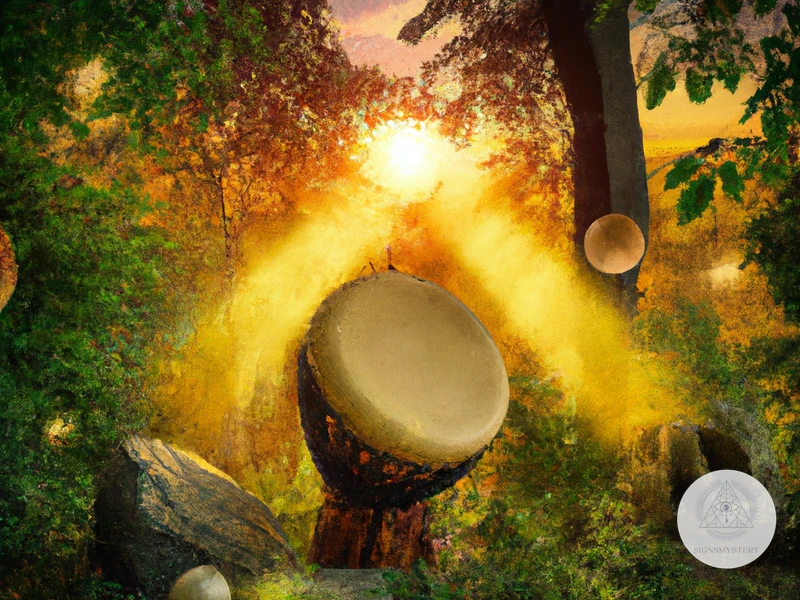
Shamanic music is deeply connected to the spiritual traditions of many cultures around the world. From the haunting rhythms of Native American drumming to the throat singing of Mongolian shamans, these traditions have played a vital role in healing and connecting individuals to a higher power. African shamanic music often incorporates call-and-response patterns and complex polyrhythms, while South American shamanic music frequently features the use of traditional instruments like the ayahuasca vine. Oceanic cultures have their own unique shamanic music traditions, such as the trance-inducing beat of the Fijian Lali drum. Even in modern Western culture, contemporary musicians have drawn upon shamanic music to create powerful, transformative experiences. The diversity and depth of shamanic music traditions is a testament to the enduring power of these practices.
Native American Shamanic Music
Native American shamanic music is characterized by its use of drums, rattles, and flutes, along with vocals that often include chanting and yelling. These songs and sounds are used in Native American spiritual and healing practices, as well as in various ceremonies and rituals.
The rhythms and melodies of Native American shamanic music are meant to induce a trance-like state in the performer and the audience. This altered state of consciousness is believed to facilitate communication with the spirit world and allow for healing or divination.
In addition to being used in spiritual and healing practices, Native American shamanic music also has cultural significance. Each tribe has its own unique musical traditions, which are passed down through generations. These songs and sounds are often tied to traditional stories and legends, and serve as a way to preserve the tribe’s history and culture.
Native American shamanic music has gained popularity outside of indigenous communities, and can now be found in various forms of popular culture. In music, film, and television, Native American music is often used to suggest a sense of mystery, wonder, or connection to nature. However, it is important to recognize that these uses often appropriate Native American culture and may not accurately represent the beliefs and traditions of Native American communities.
Native American shamanic music plays a vital role in indigenous spiritual and healing practices, as well as in preserving tribal history and culture. Its unique rhythms and melodies induce a trance-like state that facilitates communication with the spirit world, and its use in popular culture highlights its enduring cultural significance. However, it is important to approach Native American shamanic music with
Subscribe to Our Newsletter
Sign up to receive the latest news and updates.
Mongolian Shamanic Music
Mongolian shamanic music is deeply connected to the country’s culture, beliefs, and history. It has a powerful and unique sound that reflects the vast landscape and nomadic way of life of the Mongolian people. The shamanic music of Mongolia is performed by shamans or “böö”, who are believed to communicate with the spiritual world, heal the sick, and protect their communities.
The traditional instruments used in Mongolian shamanic music include the “morin khuur” or horsehead fiddle, which is considered the national instrument of Mongolia. It has a distinctive sound that is said to resemble the neigh of a horse. In addition to the morin khuur, other instruments used in shamanic music include the two-stringed “tovshuur,” the “yoochin” or dulcimer, drums, and various wind instruments.
During a shamanic ceremony, the music is used to create a trance-like state, where the shaman can communicate with spirits and receive guidance. The shamanic music of Mongolia often incorporates overtone singing or “khöömii”, which creates a distinctive and haunting sound. Khöömii involves producing multiple vocal sounds at once, including a drone that sounds like a low whistle and higher-pitched overtones that can be manipulated by changing the shape of the mouth and throat.
Mongolian shamanic music has gained international recognition, with artists like Altai Khangai and Huun-Huur-Tu bringing the unique sounds of Mongolian shamanic music to audiences around the world. The music has been used in modern contexts, such as in films like “The Return of the King” and “The Last Emperor.”
Mongolian shamanic music is deeply ingrained in the country’s cultural heritage and continues to be an important part of the spiritual and artistic traditions of the Mongolian people. Its unique sound and use of traditional instruments and overtone singing make it a fascinating and mesmerizing form of shamanic music.
African Shamanic Music
African Shamanic Music is an essential aspect of traditional African spiritual practices. It is characterized by its strong rhythms, unique vocalizations, and intricate instrumentation. In traditional African societies, shamanic music is used as a tool for healing, fostering community, and connecting with the spirit world.
One of the primary instruments used in African Shamanic Music is the djembe. The djembe is a drum made from a single piece of wood and is played with bare hands. The rhythms played on the djembe are designed to induce trance states and spiritual experiences. The rhythms are often accompanied by call-and-response vocals, hand percussion, and other instrumentation.
In West Africa, shamanic music has been used for centuries as a part of spiritual rituals and ceremonies. The griot tradition, which is present in many West African countries, includes the use of music and storytelling to pass down cultural knowledge from generation to generation.
In central and southern Africa, shamanic music is often associated with traditional healing practices. Traditional healers will use music and dance to induce trance states and communicate with the spirit world. The mbira, a traditional instrument made from a gourd with metal tines, is often used in these ceremonies.
One of the most notable styles of African Shamanic Music is the music of the pygmies of Central Africa. The pygmies use music as a way to connect with the forest and the animals that inhabit it. Their vocalizations are unique and often mimic the sounds of the forest, including bird calls and animal sounds.
African Shamanic Music is an integral part of traditional African spiritual and cultural practices. Its rhythms and vocalizations have a powerful effect on the listener, inducing trance states and fostering a sense of community and connection with the spirit world.
South American Shamanic Music
South American Shamanic music is deeply rooted in the diverse indigenous cultures of the continent. The music is typically used as a form of communication with spirits and for healing purposes. It is often characterized by the use of strong percussive rhythms and the incorporation of natural sounds, such as animal calls and waterfalls.
One example of South American Shamanic music is the Ayahuasca ceremony music of the Amazon region. Ayahuasca is a plant-based hallucinogenic brew that is traditionally used in spiritual ceremonies. The accompanying music is believed to connect participants with the spirit world and induce a trance-like state. The music consists of shakers, flutes, and other instruments, and may also involve chanting and vocalizations.
Another form of South American Shamanic music is the music of the Andes mountains, particularly the music of the Quechua people. The music is characterized by the use of panpipes, drums, charangos, and other instruments, along with vocals sung in the Quechua language. The music is used in both spiritual and secular contexts, and is often associated with the worship of the mountain gods.
South American Shamanic music has also gained popularity outside of its traditional contexts, particularly in new age and alternative spiritual practices. In these contexts, the music is often used for meditation, relaxation, and to induce altered states of consciousness.
South American Shamanic music is a rich and diverse form of music that reflects the cultural and spiritual traditions of the continent. Its use in spiritual practices, healing, and meditation continues to draw interest and intrigue from people around the world.
Oceanic Shamanic Music
Oceanic shamanic music is a unique form of music that is closely tied to the cultures and beliefs of the indigenous peoples of Oceania. This region encompasses Australia, New Zealand, Papua New Guinea, and the many islands in the Pacific, each with its own indigenous music traditions.
One of the most notable Oceanic shamanic music traditions is found among the Maori people of New Zealand. A key instrument in their music is the taonga pūoro, a collection of traditional Maori instruments that include the flute-like koauau and the trumpet-like pūtātara. These instruments are used in rituals and ceremonies, particularly in the context of Māori spirituality known as “Māoritanga.”
Similarly, the Aboriginal people of Australia have their own music traditions that are often tied to shamanic practices, including the use of didgeridoos and clapsticks in their music. The didgeridoo is a unique instrument that is often associated with spiritual connection to the land and its people.
In Papua New Guinea, the Kukukuku people have their own shamanic music traditions that are used in ceremonies and rituals, including the use of a type of bamboo flute called the kundu. This instrument is used to invoke the spirits that are central to the Kukukuku belief system.
Oceanic shamanic music traditions demonstrate the diverse ways in which music is used in various cultural contexts around the world. The unique instruments used in these traditions and the cultural significance of this music highlight the importance of preserving and celebrating these musical practices for future generations.
Shamanic Music in Modern Western Culture
Shamanic music is often associated with traditional cultures and ancient rituals. However, it has also made its way into modern Western culture, albeit in a slightly different form. In modern Western culture, shamanic music is used for different purposes, such as relaxation, meditation, and even dance.
One of the most popular modern uses of shamanic music is in the practice of yoga. Yoga studios often use shamanic music to create a calming and relaxing atmosphere, enhancing the overall experience of the practice. Shamanic rhythms and beats can help guide the breath and the movements of the body, creating a deeper connection to the practice.
Another modern use of shamanic music is in ecstatic dance. Ecstatic dance is a form of dance that encourages free movement and expression. It is often held in a dark room with no mirrors or judgments, allowing dancers to let go of their inhibitions and move freely to the beat of shamanic music. This type of dance is said to have therapeutic benefits, allowing individuals to release emotions and stress through movement.
Shamanic music has also made its way into the realm of electronic music. Many electronic artists incorporate shamanic rhythms and sounds into their music, creating a unique blend of ancient and modern styles. Electronic music festivals, such as Burning Man, often feature shamanic-inspired music and performances.
Shamanic music in modern Western culture has also been found to have therapeutic benefits. Research has shown that it can help reduce stress, anxiety, and depression. It can also improve creativity, focus, and overall well-being.
Shamanic music has found a place in modern Western culture in various forms, from yoga and dance to electronic music and therapy. Its transformative power and healing properties continue to be appreciated and utilized in new and innovative ways.
The Science Behind Shamanic Music
Shamanic music has been used for centuries and has a significant impact on the human brain. Studies have shown that the rhythmic and repetitive beat of shamanic music can lead to a shift in brainwave patterns, inducing a state of trance and altered consciousness. This is due to the way the brain processes auditory stimuli and the synchronization of neural activity in response to shamanic music. In fact, a study conducted by researchers in Sweden found that the consistent rhythmic beat of shamanic music can activate the prefrontal cortex, increasing a person’s focus and attention. Additionally, shamanic music has also been linked to reducing stress and anxiety levels. The psychotherapeutic effects of shamanic music are powerful, leading to its use in alternative treatment therapies for a range of mental illnesses. The science behind shamanic music suggests that it has profound neurological effects, making it an essential component not only in spiritual rituals but also in modern-day alternative medicine.
How Shamanic Music Works in the Brain
The effects of shamanic music on the brain have been the subject of numerous scientific studies. Researchers have found that shamanic music can stimulate the release of endorphins, dopamine and serotonin in the brain. These neurotransmitters are responsible for feelings of pleasure, happiness, and well-being.
Shamanic music can also alter brainwave activity, leading to changes in consciousness and altered states of awareness. When people listen to shamanic music, their brains enter a state of relaxation and increased suggestibility. This makes it easier for them to access unconscious or spiritual realms and to connect with their inner selves.
Studies have also shown that shamanic music can activate the amygdala, a region of the brain responsible for processing emotions. This can lead to the release of repressed emotions and help individuals overcome emotional and psychological trauma.
At the same time, shamanic music can affect the prefrontal cortex, which is responsible for executive function and decision making. This can lead to enhanced creativity and problem-solving abilities, as well as improved focus and concentration.
The effects of shamanic music on the brain are complex and multifaceted. They can lead to changes in consciousness, altered states of awareness, and enhanced emotional and cognitive function. And while there is still much to learn about how shamanic music works in the brain, the evidence suggests that it has transformative and healing potential for individuals and society as a whole.
The Benefits of Shamanic Music
The benefits of Shamanic Music go beyond its mesmerizing nature and its cultural significance. Studies have shown that listening to shamanic music can have a variety of positive effects on the mind and body.
| Benefits | Description |
|---|---|
| Stress reduction | Shamanic music can help combat stress and anxiety by slowing down brainwave activity and inducing a meditative state. |
| Increased creativity | Through its rhythmic beats and chanting, shamanic music can stimulate the brain and trigger creative thinking and problem-solving skills. |
| Emotional healing | Shamanic music can help individuals process and release emotions, leading to a greater sense of emotional well-being. |
| Physical healing | Shamanic music has been used in healing rituals for centuries, and studies have shown that it can have a positive effect on physical health by reducing pain and promoting relaxation. |
| Spiritual connection | Shamanic music can help individuals connect with a higher power and transcend their physical existence, leading to a greater sense of spiritual fulfillment. |
Listening to shamanic music can also enhance meditation and yoga practices, as well as improve sleep quality. Its effects on the brain have also been linked to improved cognitive function and memory retention. With its numerous benefits, it’s easy to see why shamanic music has remained an important part of various cultures throughout history.
Conclusion
Overall, shamanic music plays a crucial role in various cultures across the world. It is a powerful tool for shamanic healing, spiritual connection, and transcendence.
Throughout history and in different parts of the world, shamanic music has been used for various purposes, including inducing trance states, communing with the spirits, and connecting with the natural world. It has the power to transform consciousness, elevate moods, and promote healing.
Moreover, shamanic music traditions differ in various parts of the world, but they share common features such as the use of specific instruments and repetitive rhythms. Whether it’s the Native American, African, or Mongolian shamanic music, these traditions have a significant cultural significance that connects people with their ancestors, traditions, and spirituality.
Scientific studies have also provided evidence of the benefits of shamanic music in healing. MRI studies have shown that shamanic music can affect the brain’s neural circuits, promoting relaxation and feelings of well-being. It can also reduce stress, anxiety, and depression.
In conclusion, shamanic music is an essential aspect of humanity’s cultural heritage and continues to be a relevant tool for spiritual and emotional well-being. Its power to promote healing and elevate consciousness is unparalleled. As we continue to explore and appreciate different cultures and their practices, we must not forget the significance of shamanic music and the profound impact it has on our collective consciousness.
Frequently Asked Questions
What makes music shamanic?
Shamanic music is characterized by its repetitive rhythmic patterns and often includes elements like chanting, drumming, and the use of traditional instruments. It is intended to create a trance-like state in the listener, facilitating spiritual connection and healing.
What role does shamanic music play in different cultures?
Shamanic music is used in a variety of ways across different cultures. It may be used in healing rituals, as part of religious ceremonies, or in trance-inducing practices like meditation and journeying.
What are some examples of shamanic music from around the world?
Examples of shamanic music include the didgeridoo music of the Australian Aborigines, the qilaut drumming of the Inuit people, and the icaros songs of the Amazonian ayahuasca tradition.
What is the transformative power of shamanic music?
The repetitive rhythms and hypnotic qualities of shamanic music can transport listeners to altered states of consciousness, facilitating spiritual growth and introspection. Many people report feeling a deeper connection to themselves and the world around them after listening to shamanic music.
How does shamanic music differ across different parts of the world?
Shamanic music varies widely across different parts of the world, with different rhythms, instruments, and vocal styles being used in different cultural contexts. However, many of these traditions share a common emphasis on the spiritual and healing powers of music.
What is the significance of shamanic music in African cultures?
In many African cultures, shamanic music plays an important role in communicating with ancestral spirits and facilitating healing. African shamanic music often emphasizes percussive rhythms and call-and-response singing.
How is shamanic music used in Native American traditions?
Native American shamanic music is often used in healing ceremonies and vision quests. It may include the use of flutes, drums, and rattles, as well as vocalizations like chanting and yipping.
What is the role of shamanic music in modern Western culture?
Shamanic music has gained popularity in Western culture as a tool for meditation, relaxation, and spiritual exploration. Many people use shamanic music in combination with practices like yoga and mindfulness meditation.
What are the benefits of listening to shamanic music?
Listening to shamanic music can have a variety of benefits, including reducing stress and anxiety, promoting relaxation, and enhancing spiritual awareness. Some people also report experiencing physical and emotional healing after listening to shamanic music.
How does shamanic music interact with the human brain?
Research has shown that shamanic music can activate certain regions of the brain associated with emotional processing, as well as areas involved in the experience of altered states of consciousness. This may help to explain the transformative power of shamanic music.




